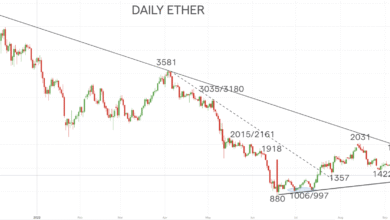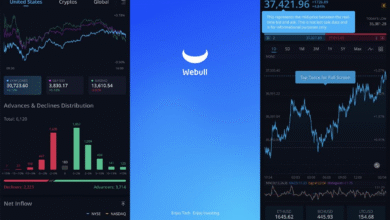AI Model GLM-4.5: Cheaper and More Efficient Than DeepSeek

The AI model GLM-4.5 is making waves in the world of artificial intelligence, especially with its promise of cost-effectiveness compared to competitors like DeepSeek. Created by the startup Z.ai, this groundbreaking model is not only open-source but remarkably efficient, needing only eight Nvidia H20 chips for optimal operation. This significant reduction in resource requirements positions GLM-4.5 as an appealing alternative, echoing the development trends seen in China’s AI landscape. As the latest entry in the rapidly evolving sector, GLM-4.5 reflects Z.ai’s commitment to advancing deep learning technologies while remaining budget-friendly. With its launch at the World Artificial Intelligence Conference this year, it is set to redefine how businesses approach AI solutions in the digital age.
The GLM-4.5 artificial intelligence framework represents a significant leap forward in the realm of autonomous machine learning capabilities. Developed by Z.ai, formerly known as Zhipu, this innovative system is designed to be more accessible, both in terms of cost and operational requirements, than other leading models like DeepSeek. By harnessing open-source technology, this model marks an important phase in China’s pursuit of cutting-edge AI developments. As industries increasingly shift towards cost-effective AI strategies, the introduction of GLM-4.5 is likely to influence competitors and elevate the standard in AI solutions. Ultimately, this model embodies the future of intelligent systems, revolutionizing how computational tasks are approached in the business landscape.
Introduction to Z.ai and GLM-4.5 AI Model
China’s AI landscape is rapidly evolving, with startup Z.ai, formerly known as Zhipu, making waves with its revolutionary GLM-4.5 AI model. Announced recently, this model is not only touted to be cheaper than DeepSeek’s offerings but also promises to bring enhanced capabilities through its agentic AI design. This innovative approach allows the GLM-4.5 to autonomously break down complex tasks into manageable sub-tasks, improving accuracy and efficiency—a significant advancement in the ongoing quest for superior AI performance.
The competitive pricing strategy of Z.ai further strengthens its market position. The new GLM-4.5 model charges just 11 cents per million input tokens and 28 cents per million output tokens, providing a cost-effective alternative to DeepSeek, which charges 14 cents and $2.19, respectively. As the demand for affordable AI solutions grows, particularly among developers and startups, Z.ai’s pricing model not only makes it an attractive option but also positions it as a key player in the global AI race.
DeepSeek vs GLM-4.5: Cost-Effective AI Solutions
DeepSeek has long been regarded as a heavyweight in the AI industry, with its advanced models achieving significant traction among users. However, the introduction of Z.ai’s GLM-4.5 model signals a shift in the competitive landscape, highlighting a growing focus on cost-efficiency without compromising performance. Z.ai’s ability to deliver a model that requires fewer resources—only eight Nvidia H20 chips—illustrates the company’s commitment to providing powerful AI solutions that don’t break the bank.
In comparison, DeepSeek’s substantial investment in hardware and technology has led to impressive performance metrics, but at a much higher operational cost. Analysts suggest that while DeepSeek’s training costs are under $6 million, this figure may not paint the full picture, given their historical hardware expenses. By contrast, Z.ai’s approach leverages the potential of open-source AI to create a more sustainable and financially manageable offering, appealing to developers who are conscious about costs and efficiency.
Navigating Semiconductor Challenges in AI Development
The recent challenges in semiconductor supply chains, exacerbated by geopolitical tensions, have significantly impacted the AI industry, particularly in China. Z.ai’s new GLM-4.5 model showcases its adaptability to these challenges by utilizing the Nvidia H20 chips, which have been specifically modified for compliance with U.S. export regulations. This tailored approach allows Z.ai to bypass some of the supply chain issues that have affected competitors, positioning it strategically in the market.
Despite the uncertainty surrounding the resumption of chip exports from U.S. manufacturers, such as Nvidia, Z.ai has asserted that it currently possesses adequate computing resources to support its operations. This insight into Z.ai’s supply strategy indicates a forward-thinking approach, as the reliance on readily available technology can mitigate potential downtime and keep development timelines on track. As demand for AI models grows, having a steady chip supply could prove to be one of the unique advantages for Z.ai over its peers.
Agentic AI Technology: A Game Changer?
Z.ai has introduced a pioneering concept in the AI field with its agentic AI model. This technology allows the GLM-4.5 to autonomously break down tasks, leading to an anticipated increase in execution accuracy. This innovative approach not only sets Z.ai apart from established players like DeepSeek but also aligns with contemporary trends in AI development, where autonomy and efficiency are paramount. By optimizing task execution through intelligent decomposition, the GLM-4.5 could potentially revolutionize how AI models operate.
The agentic AI model signifies a significant shift away from traditional methodologies, which often require extensive human intervention in the programming of tasks. As developers become more interested in AI tools that enhance productivity, Z.ai’s approach promises to save time and resources, allowing for more focus on creative and strategic initiatives. This could ultimately lead to a broader acceptance and integration of AI technologies across various sectors, reinforcing Z.ai’s position in the evolving AI marketplace.
Open-Source AI: Democratizing Technology
Open-source AI models have gained traction as a way to democratize access to advanced technology. Z.ai’s GLM-4.5 model follows this trend by being available for free download, granting developers the ability to experiment and innovate without incurring significant costs. This open-access philosophy is essential for fostering creativity and collaboration within the tech community, allowing small companies and independent developers to leverage cutting-edge AI tools that were previously available only to larger, well-funded corporations.
By reducing barriers to entry, open-source models like GLM-4.5 can ignite innovation across various industries. Developers can now focus on building unique applications tailored to their specific needs rather than being constrained by budget limitations. As more organizations recognize the advantages of open-source AI, the competitive landscape will continue to evolve, prompting existing players like DeepSeek to consider more accessible pricing strategies and collaborative approaches in order to remain relevant.
China’s AI Developments and Future Prospects
China has emerged as a formidable player in the AI arena, showcasing rapid advancements that challenge established norms in the technology sector. Companies like Z.ai are at the forefront of this revolution, utilizing unique approaches and innovative technologies to create powerful solutions. The recent launch of GLM-4.5 reflects not only the capabilities of Chinese startups but also the potential for sustained growth and competitiveness in the global AI market.
The implications of China’s developments in AI are vast, particularly as they relate to international relations and technological competitiveness. As organizations like Z.ai push the boundaries of what is possible with AI, they set the stage for a new era of technology that prioritizes adaptability, efficiency, and open access. This evolution may prompt established players in the U.S. and beyond to rethink their strategies, potentially altering the global landscape of AI innovation.
Comparative Analysis of AI Models and Costs
Evaluating the cost-effectiveness of AI models is crucial for businesses looking to leverage these technologies. By scrutinizing the pricing structures of models like GLM-4.5 and DeepSeek, companies can make informed decisions that align with their operational budgets. With GLM-4.5’s lower token pricing compared to DeepSeek, it stands to attract a diverse user base, from small startups to larger enterprises seeking to optimize their AI expenditures.
Furthermore, the comparative analysis extends beyond price alone; it encompasses performance metrics, operational efficiency, and resource utilization. By placing emphasis on affordability while ensuring technological advancement, Z.ai has established a benchmark for the industry, potentially encouraging other firms to reevaluate their pricing and operational strategies. The balance between cost and capability will ultimately determine the long-term success of these AI models in an increasingly competitive market.
Potential Market Implications of Z.ai’s Strategy
The entry of Z.ai with GLM-4.5 into the AI market carries substantial implications for both competitors and consumers. As they introduce a lower-cost yet highly capable model, it may trigger a domino effect among other AI companies to revamp their offerings and pricing structures to remain competitive. This could lead to an overall decrease in costs associated with AI adoption across various industries, making advanced technology more accessible to organizations of all sizes.
Moreover, the competitive pressure exerted by Z.ai could foster a new wave of innovation, as companies strive to enhance their models and features to attract users. Such a dynamic environment not only accelerates the advancement of AI technologies but also enhances the quality and diversity of available solutions. This can ultimately benefit consumers, paving the way for more options and better performance in the AI landscape.
Frequently Asked Questions
What is the GLM-4.5 AI model from Z.ai and how does it compare to DeepSeek?
The GLM-4.5 AI model developed by Z.ai is a cost-effective, open-source artificial intelligence solution that operates at about half the size of DeepSeek’s model. It utilizes only eight Nvidia H20 chips for operation. Unlike DeepSeek, GLM-4.5 incorporates ‘agentic’ AI, which autonomously breaks down tasks into smaller sub-tasks for improved execution accuracy.
How does the GLM-4.5 AI model reduce operational costs compared to DeepSeek?
GLM-4.5 offers competitive rates at 11 cents per million input tokens and 28 cents per million output tokens, lower than DeepSeek’s costs of 14 cents and $2.19 respectively. This makes the GLM-4.5 AI model a more cost-effective option for developers looking for efficient open-source AI solutions.
What are the key features of Z.ai’s GLM-4.5 model that enhance its performance?
Key features of the GLM-4.5 model include its smaller size compared to DeepSeek, which allows for easier operation using fewer resources. Furthermore, its ‘agentic’ AI design enables the model to effectively decompose complex tasks, thereby improving the precision and reliability of its outputs.
Is the GLM-4.5 AI model open-source like DeepSeek?
Yes, the GLM-4.5 AI model is open-source, similar to DeepSeek. This allows developers to download and utilize the model free of charge, promoting accessibility and innovation in artificial intelligence development.
How does the training cost of GLM-4.5 compare to DeepSeek’s V3 model?
While the specific training costs for GLM-4.5 have not been disclosed by Z.ai, the competitive pricing strategy indicates a focus on cost-effectiveness, especially in light of DeepSeek’s reported training costs of under $6 million for its V3 model.
What hardware requirements are necessary for running the GLM-4.5 AI model?
The GLM-4.5 AI model requires only eight Nvidia H20 chips for operation. This is notably less than DeepSeek’s requirements, making it a more accessible option for organizations looking to utilize AI without extensive hardware investments.
Why is the GLM-4.5 model significant in the context of China’s AI developments?
The GLM-4.5 model represents a significant advancement in China’s AI landscape as it provides a cost-effective alternative to existing models like DeepSeek. This advancement highlights China’s growing capabilities in developing competitive artificial intelligence technologies while addressing market demands for affordability and efficiency.
What impact does the launch of the GLM-4.5 AI model have on the AI industry?
The launch of the GLM-4.5 model by Z.ai is poised to disrupt the AI industry by offering a more affordable and efficient alternative to DeepSeek and others in the market. This may lead to increased competition, fostering innovation and potentially lowering costs across the AI landscape.
| Key Aspects | Details |
|---|---|
| Startup Name | Z.ai (formerly Zhipu) |
| Model Name | GLM-4.5 |
| Cost Comparison | 11 cents per million input tokens (vs. 14 cents for DeepSeek R1), 28 cents per million output tokens (vs. $2.19 for DeepSeek) |
| Model Size | Approximately half the size of DeepSeek, requires only 8 Nvidia H20 chips |
| Operation | Open source; can be downloaded for free |
| AI Type | Agentic AI—decomposes tasks into sub-tasks |
| Market Context | China’s advancements in AI are becoming cost-effective, similar to DeepSeek’s impact |
| Recent Developments | Nvidia allowed resuming sales of H20 chips to China; Z.ai claims sufficient computing power |
Summary
AI model GLM-4.5 has emerged as a cost-effective alternative compared to DeepSeek, making significant strides in the AI landscape. With its competitive pricing, open-source accessibility, and innovative ‘agentic’ AI framework, GLM-4.5 promises to enhance task execution efficiency, showcasing China’s growing prowess in artificial intelligence development. This model not only challenges established players like DeepSeek but also sets a new benchmark for affordability in AI usage.




